4 Types of Cockroaches In Arizona (With Pictures)
-
Pete Ortiz
- Last updated:
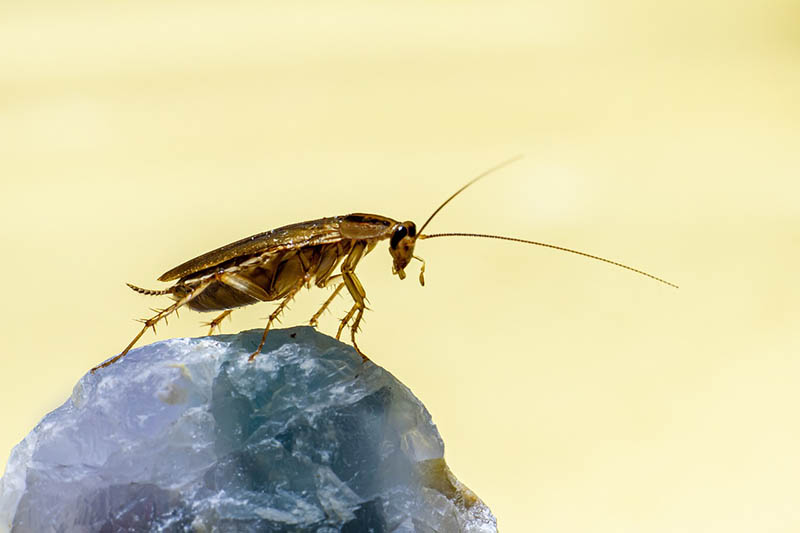
Cockroaches are not only unsightly, but they have the potential to spread disease-causing bacterial pathogens through food contamination. Their feces, skin, secretions, and carcasses can cause severe allergic reactions in humans and pets.
In Arizona, cockroaches are active all year long. Property owners, therefore, need to be on the watch for these pests and quickly get rid of them before an infestation gets serious.
There are four types of cockroaches common in Arizona, all with distinct physical characteristics. Identifying the kind of cockroach on your property allows you to target their possible hiding areas and take the necessary measures to keep them out.
The 4 Types of Cockroaches In Arizona
1. German Cockroach
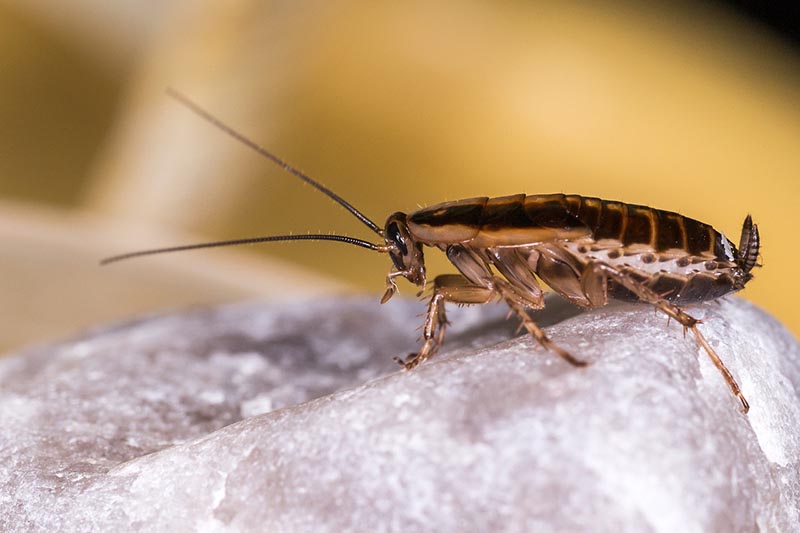
Known scientifically as Blattella germanica, the German cockroach is the most common type found in homes. It’s one of the smaller cockroaches, with adults growing to about 15 mm long.
It’s omnivorous and eats a lot of things, including human foods, leather, fruit, pet food, and dead bodies of other cockroaches.
Identification
The adult German cockroach measures 10 to 15 mm long. The male is thin and slender, while the female has a wider and thicker body. They are dark brown in color, with their distinguishing characteristic being two lengthwise parallel bands on the pronotum.
Habitat
German cockroaches are found in many indoor environments, including homes, hospitals, restaurants, ships, aircraft, and trains. They live in dark places such as crevices and cracks. In a home, they are found in places with food and water sources, such as the kitchen and bathroom.
2. American Cockroach
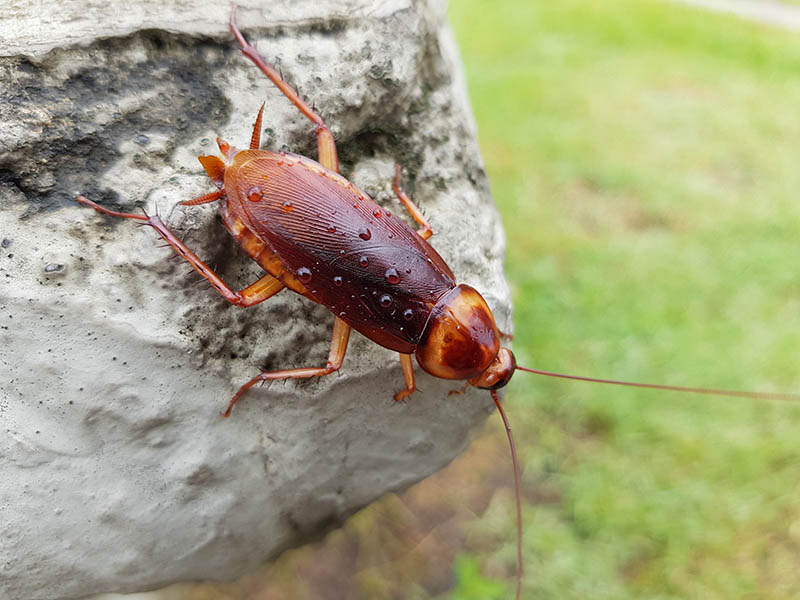
The American cockroach is the second-most common cockroach in Arizona after the German cockroach. Despite its name, the American cockroach originated from Africa.
It’s a peridomestic cockroach, meaning it lives in and around humans. Unlike the German cockroach, however, it’s rare in residential homes and more common in commercial settings, such as restaurants.
American cockroaches are omnivores, feeding on anything from decaying matter to peanuts and fish. They also feed on hair, book bindings, paper, dead insects, and soft cloth.
Identification
The American cockroach grows to an average length of 4 cm, making it the largest peridomestic cockroach in Arizona.
An adult is reddish brown, with an identifying yellow or pale brown band around the edge of the pronotum. Males have long wings that extend beyond the tip of their abdomen by about 4-8 mm.
Habitat
American cockroaches mostly inhabit large commercial buildings where food is prepared and stored, including restaurants, bakeries, and grocery stores. They hide in damp places such as sewers, steam tunnels, and basements.
Outside, they prefer moist and shady areas such as wood piles, mulch, and hollow trees. American cockroaches mostly venture indoors to avoid extreme weather conditions and search for water and food. They hide near sinks, toilets, and water pipes when indoors.
3. Oriental Cockroach
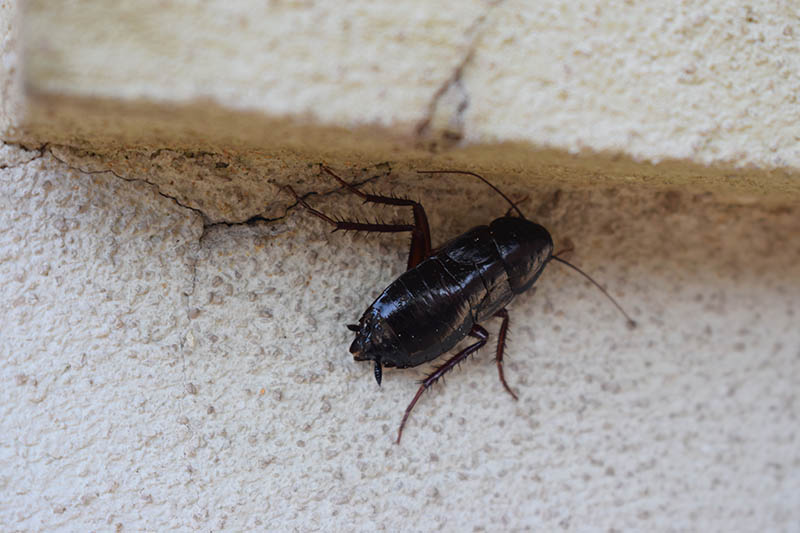
Oriental cockroaches are also referred to as water bugs because of their love for damp areas. They cannot survive more than two weeks without water (they can go a month without food) so they usually stay near water sources. They feed on decaying organic matter and all kinds of rubbish and filth commonly found outside.
Identification
Oriental cockroaches have smooth, shiny black bodies, much like beetles. They are sometimes referred to as black beetle cockroaches because of their physical appearance. Besides shiny black, Oriental cockroaches can also have dark reddish-brown bodies.
There are two main differences between male and female oriental cockroaches; males have wings while females don’t, and females can grow to a length of 32 mm while males reach only 25 mm.
Habitat
You’re more likely to find Oriental cockroaches outdoors than indoors. Outside, they live under firewood, stones, debris, leaves, garbage dumps, and in sewers. They stick to low-level damp areas like basements and beneath sinks and washing machines when indoors. They mostly invade homes in summer to escape the hot weather and seek shelter in damp and cool locations.
4. Brown Banded Cockroaches
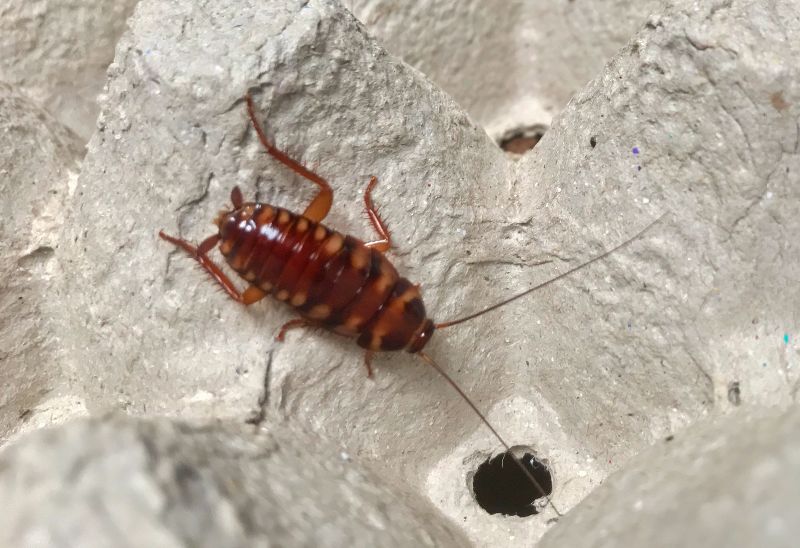
Brown-banded cockroaches are domestic, meaning they live their entire lives indoors. They are small in size, resembling German cockroaches in size and shape. Like other cockroach types, they feed on organic matter. They are also fond of starchy materials such as wallpaper, books, and envelopes.
Identification
You can identify brown-banded cockroaches by the two dark horizontal bands found on their closed wings. Adult males grow to a length of about 14.5mm, while females reach between 10-12 mm. On males, wings cover the entire abdomen, while females’ wings are shorter than their abdomen. Males can fly, but females cannot.
Habitat
Brown-banded cockroaches live in many areas indoors, and not necessarily ones with food or water sources. You can find them in bedrooms, tables, storage cabinets, and electronic equipment.
 Signs of a Cockroach Infestation
Signs of a Cockroach Infestation
Cockroaches, regardless of type, prefer to stay in the dark and avoid light. You’ll rarely see one out and about during the day, but that’s not to mean they are absent. If you see one in the daylight, it signifies a huge infestation. Here are four signs of a cockroach infestation to watch out for.
Droppings
Cockroaches often leave behind their droppings in infested areas. Their droppings are about 1mm wide, with varying lengths. They are dark in color, resembling black pepper. There will be more droppings around their hiding spot and the places they feed.
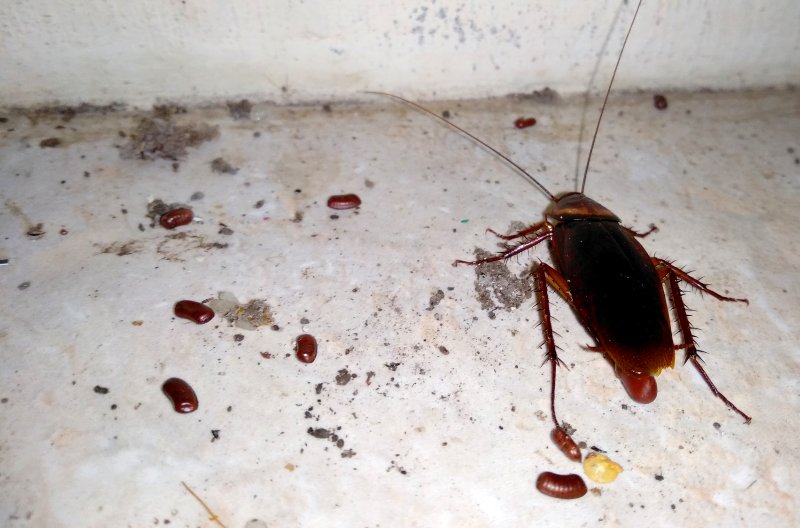
Egg Capsules
Female cockroaches lay eggs in capsules known as ootheca. Ootheca is often dark or light brown in color and segmented, although their size varies with species. Each capsule contains many eggs. Cockroaches often leave their eggs in hidden areas such as under sinks and in wall crevices. If you see eggs in your home, it signifies an active and increasing cockroach population.
Shed Skin
Cockroaches shed skin during the second stage of their cycle of life as nymphs. They shed skin multiple times, some species as many as eight times, before they reach adulthood. Shed cockroach skin is, therefore, a good sign of an infestation.
Find a pest-control specialist in your area, and get free, no-commitment estimates for your project.Consult a PEST-CONTROL expert

Conclusion
All types of cockroaches pose a health risk to inhabitants and pets in the home. This is because they live in dirty places and feed on bacteria-ridden filth, which they later carry into the house and contaminate surfaces, foods, and clothing.
To keep them out of your house, remove the conditions that attract them. Keep your sinks dry, fill cracks in the wall, and don’t leave food in the open. Also, keep your yard free of rubbish and clutter to prevent outdoor cockroach infestations, which might eventually migrate into the house in search of food.
Featured Image Credit: Lukas Juhas, Unsplash
Contents


 Signs of a Cockroach Infestation
Signs of a Cockroach Infestation